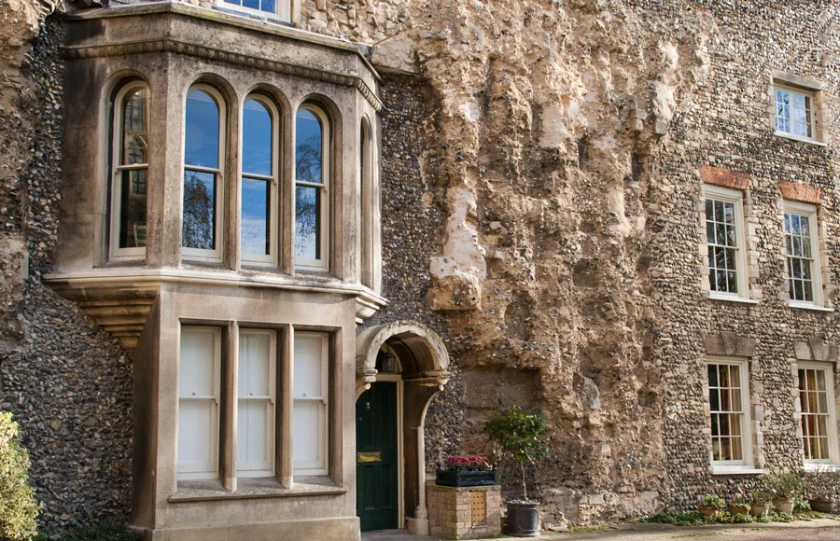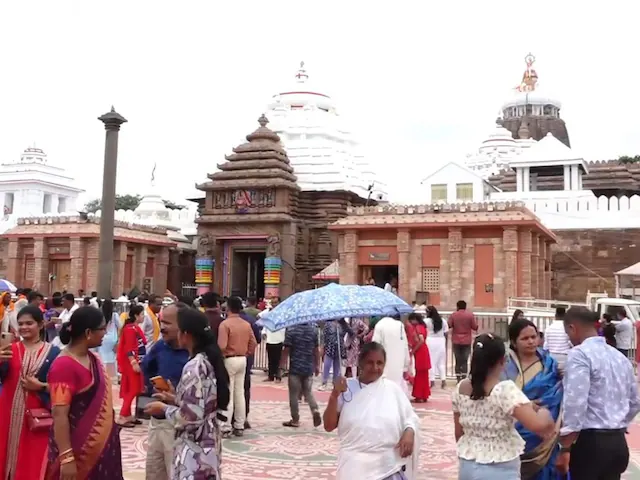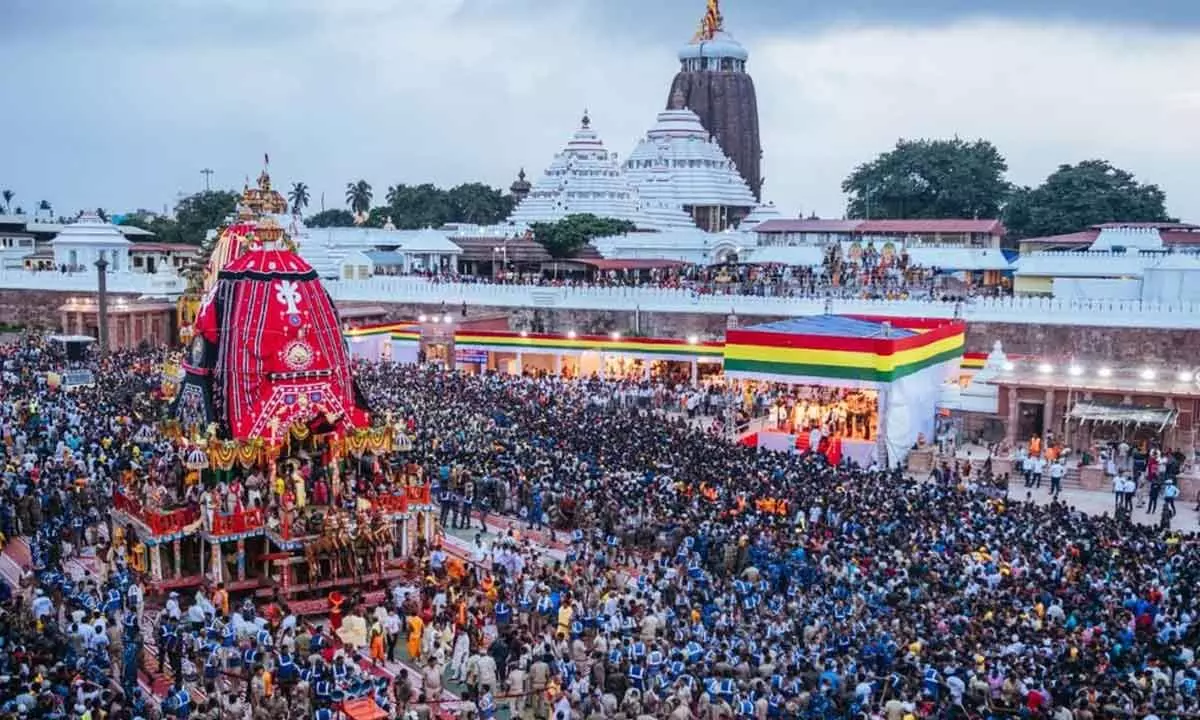The Hindu : Page 02
Syllabus : : GS 1 : History
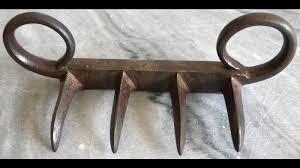
The historic wagh nakh, a tiger claw-shaped weapon, used by Maratha warrior king Chhatrapati Shivaji Maharaj to kill Bijapur Sultanate general Afzal Khan, is now on display at the Satara Museum.
- It was brought from London’s Victoria and Albert Museum to celebrate the 350th anniversary of Shivaji Maharaj’s ascension, with a grand event attended by state leaders and royalty.
- The weapon was brought to India from London’s Victoria and Albert Museum on July 17.
- The display marks the 350th anniversary of Shivaji Maharaj’s ascension to the throne.
- The wagh nakh will be on display at the Satara Museum for the next seven months.
- A grand welcome was organized in Satara for the weapon.
The Battle of Pratapgarh:
- The Battle of Pratapgarh took place on November 10, 1659, near the Pratapgarh Fort in Maharashtra.
- It was a significant conflict between Chhatrapati Shivaji Maharaj and Bijapur Sultanate general Afzal Khan.Afzal Khan, a powerful commander, sought to crush Shivaji Maharaj’s rising power.
- Shivaji Maharaj, known for his military strategy, used guerrilla tactics to counter Khan’s forces.
- The battle is famed for Shivaji Maharaj’s innovative use of the wagh nakh, a tiger claw-shaped weapon, which he used to kill Afzal Khan.
- The defeat of Afzal Khan marked a major victory for Shivaji Maharaj, enhancing his reputation and consolidating his power in the region.
Chhatrapati Shivaji Maharaj
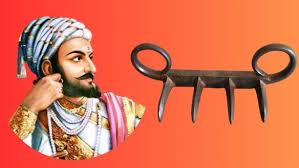
- He was born on 19th February 1630 at Shivneri Fort in District Pune in the present-day state of Maharashtra.
- He was born to Shahaji Bhonsle, a Maratha general who held the jagirs of Pune and Supe under the Bijapur Sultanate, and Jijabai, a pious woman whose religious qualities had a profound influence on him.
- Shivaji was not named after Lord Shiva. His name was derived from the name of a regional deity – ‘Goddess Shivai.’
Contributions
- He revived ancient Hindu political traditions, and court conventions and promoted the usage of Marathi and Sanskrit, rather than Persian, in court and administration.
- India's first-ever navy in the modern era was built by Shivaji to protect the coast of Maharashtra.
- He established a competent and progressive civil rule with the help of disciplined military and well-structured administrative organizations.
- He innovated military tactics, pioneering non-conventional methods (guerrilla warfare) and leveraged strategic factors like geography, speed, and surprise.
- He focused on pinpoint attacks to defeat his larger and more powerful enemies.
- A brave and genuinely secular ruler, he respected women and cared for the downtrodden and farmers.
- He died on 3rd April 1680.
Who was Afzal Khan?
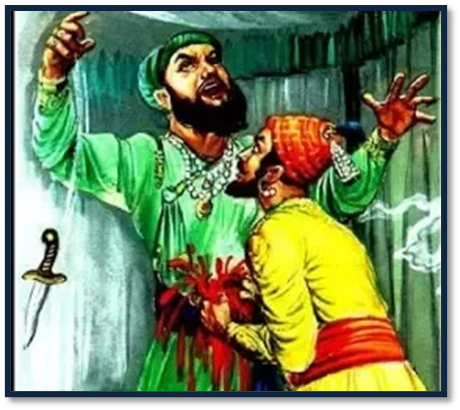
- He was a 17th-century commander of the Adil Shahi dynasty of Bijapur.
- With Chhatrapati Shivaji’s rise and increasing control of the region, Afzal Khan was seen as the man to subdue him in the Deccan.
- Khan put together a force of 10,000 cavalry and marched from Bijapur to Wai, plundering Shivaji’s territory along the way.
- Shivaji called a council of war at the fort of Pratapgarh, where most of his advisers urged him to make peace.
- During the meeting, an embrace between the two turned into an attack in which Shivaji emerged victorious. This was followed by a rout of the Adilshahi army at the hands of the Marathas.
- As per Maratha sources, Khan’s remains were buried at the fort and a tomb was constructed on Shivajij’s orders.
Important Battle:
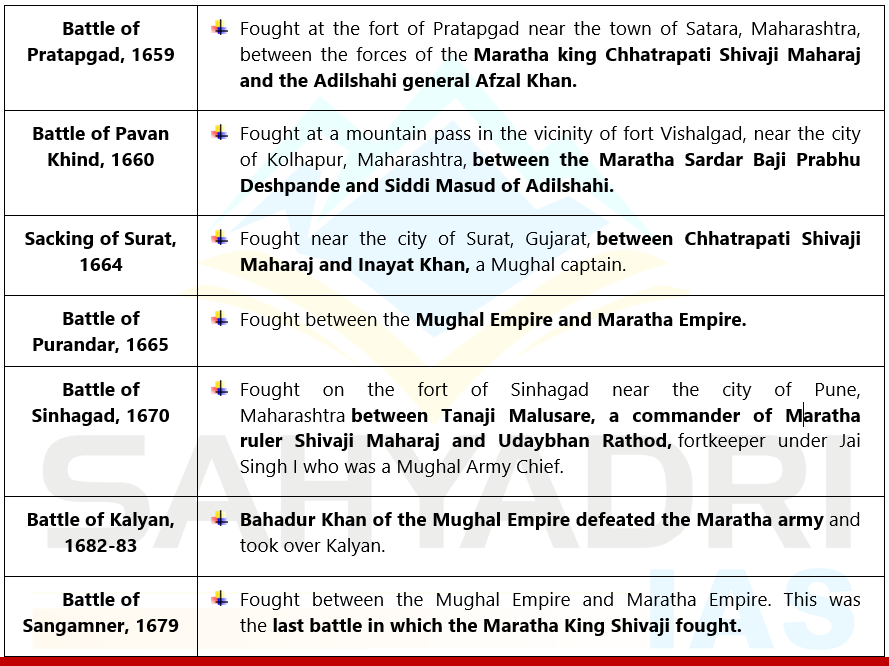 UPSC Prelims Practice Question
UPSC Prelims Practice Question
Ques : Chhatrapati Shivaji is related to which Maratha Gharana?
a) Holkar
b) Bhonsle
c) Scindia
d) None of the above
Ans : b)



 UPSC Prelims Practice Question
UPSC Prelims Practice Question 